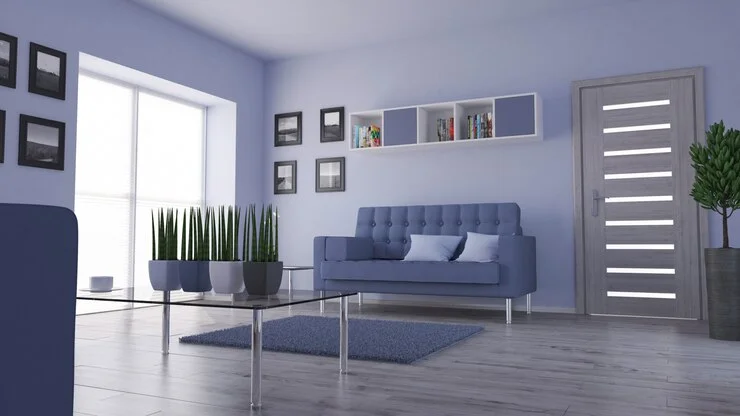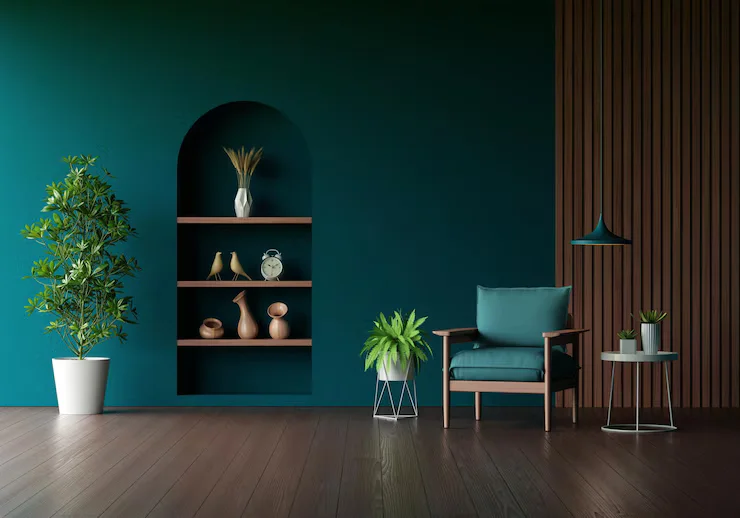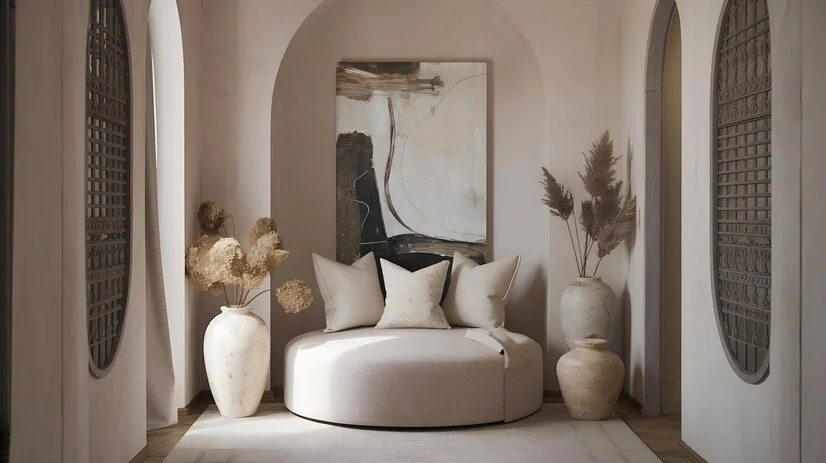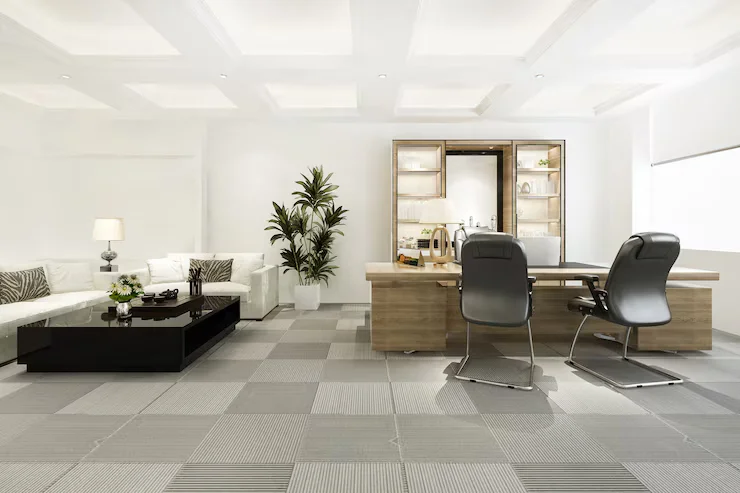Introduction
Today sustainability in homes becomes more importance. Due to the awareness of global climatic crisis, most the homeowners do look forward towards minimizing ecological footprint. An eco-friendly home is not just about the aesthetics, but a holistic approach that includes sustainable practices, materials, and designs that contribute to a healthier planet. Here, we will discuss some strategies and tips on creating a greener home, with the help of the best interior company in Kolkata.

What Makes a Home Eco-Friendly?
An eco-friendly home is characterized by the minimization of its impact on the surrounding environment while ensuring comfort and functionality. Some of the central elements that define a space for sustainable living include:
- Sustainable Materials: Employing products that are recycled, renewable, or sourced with responsibility.
- Energy Efficiency: Solutions that reduce energy intake.
- Water Conservation: Establishing systems that reduce usage without sacrificing convenience.
- Air Quality: Materials and other products that enhance indoor quality.
Focusing on these areas will lead to a beautiful home that reflects your own environmental values.
Choosing Environmental-Friendly Materials for Your House
Materials are the largest component of any house and determine the looks and sustainability of your house. Here’s a closer look at the most popular sustainable materials widely used today:
- Reclaimed Wood: The reclaimed wood best makes the floors, furniture, and any decoration. It gives one the charm of being in the country while at the same time conserving resources. The story behind each piece of reclaimed wood adds a certain uniqueness to the home.
- Bamboo: Grass type popularly being used as good alternative sources of hardwood materials for building. Bamboo has the look of being almost as strong as any wooden product; however, the versatility fits both flooring and furniture requirements.
- Natural Stone: Natural stone, whether granite or slate, would give a sense of refinement to your house. You can have it for hundreds of years without replacement.
- Recycled Materials: There is the option of including recycled metal and glass that will add a modern aspect to your interiors. This not only helps reduce waste but also brings a distinct aesthetic to the product.
- Textiles: Use organic cotton or hemp, linen for a soft, natural feel that requires fewer pesticides and chemicals to produce.
Energy-Efficient Practices and Choices
Green homes are energy-efficient. Here are a few simple ways to optimize energy savings:
- LED Lighting and Natural Light
Use Energy Saving LEDs: Replacing ordinary light bulbs with LEDs saves money and can save up to 75% of what the traditional bulbs consume.
Natural Light: More windows and skylights create more use of natural lighting which makes it possible not to switch on electric lights by noon. - Proper Insulation and Sealing
Proper insulation makes your house warm during winter and cool during summer. It also saves you on energy. Cellulose or spray foam insulation materials are great.
Seal all windows and doors tight so that no air escapes or gets in, hence, maintaining the temperature inside the house. - Energy Efficient Appliances
When shopping for appliances, look for appliances that carry the Energy Star logo. These are energy-saving products that save you money in the long run.
Eco-Friendly Furnishings and Decor
Furniture and decoration can play a huge role in making your home sustainable. Here are some eco-friendly furnishing ideas:
- Locally sourced furniture: Sourcing furniture from local artisans will save you the emission costs that come with transporting it and supports the local economy.
- Natural finishes: Instead of the traditional finish, try using natural oils or water-based stains.
- Sustainable Textiles: Seek out upholstery materials in recycled or organic material. They generally have a more extended life cycle and have little or no negative impacts on earth.
Water Conserving Techniques
Water is one of life’s treasured assets and its preservation one thing that needs to experience life first-hand to get a hold of just how precious it truly is. Here’s where you join your home with water conservation techniques:
- Low-Flow Shower Heads and Faucets: The two appliances can help save so much water usage while not impairing the performance of the shower head or faucet at large. One simple appliance that you might want to replace in adding to your bathroom.
- Dual-Flush Toilets: Dual-flush toilets enable you to use either a low-water flush for liquid waste, saving gallons in the long run.
- Smart Irrigation Systems: If you have a garden, consider installing smart irrigation systems that adjust the amount of water you give your plants depending on the weather so that your plants get the right amount of water at the right time.
Low-VOC Products for Improved Indoor Air Quality
Good indoor air quality is an important aspect of health and wellness. Here are some strategies to improve air quality in your home:
- Low-VOC Paints: Conventional paints emit toxic substances into the air. The use of low-VOC or no-VOC paints will make your home healthier for you and your loved ones.
- Air-Purifying Plants: Add plants such as snake plants, peace lilies, and spider plants that are capable of filtering toxins and enhancing air quality.
- Natural Fiber Rugs: Rugs made from natural material, such as jute, cotton, or wool, will not release harmful chemicals and can be biodegradable.
Partnering with experienced interior designers can add much substance to your journey toward sustainability in your home. They know the fine print that goes into sustainable design best, and it is within their knowledge that you make the right decisions. They take time to look at the space, listen to the preferences, and give unique solutions that have your individuality while cutting down your impact on the environment.
The best thing about professionals is that they will utilize the most recent sustainable materials and design practices to create a great living space. They will help you make selections that will keep every decision leading to a greener living space.
Frequently Asked Questions (FAQs)
Q1: What is the benefit of using eco-friendly materials in interior design?
Eco-friendly materials are better for the environment, promote a healthier indoor atmosphere, and often last longer, reducing the need for replacements.
Q2: Does it cost more to plan eco-friendly homes?
Cost may vary at first; however, in the long term, energy consumption costs would reduce significantly, along with reduced maintenance costs. Eco-friendly is, in effect, a cost-effective long-term measure.
Q3: What is the positive effect of indoor plants upon the quality of indoor air?
Indoor plants release oxygen while absorbing harmful toxins from the air. A fresh atmosphere and healthier life would ensue with more plants inside the home.
Q4: Why do people think bamboo is environmentally friendly?
Bamboo grows at a rapid pace. For instance, while aspen trees require two decades to mature, the same plant grows matured in merely three years if grown under optimal conditions. Bamboo is one of the fastest-growing plants, making it one of the very renewable resources that requires minimal water and pesticides, reducing environmental strain.
Conclusion
A greener, eco-friendly home can be a current reality in your life by making conscious choices for the environment and yourself. In other words, the use of sustainable materials and energy efficiency along with using the best interior company in Kolkata may transform your space into a sanctuary, showcasing your concern for sustainability. And eco-friendly design is an experience one should take—it’s for not only you and your family but also the planet shared by all of us.
Embracing these practices will give us the chance to have a meaningful impact—one home at a time.










